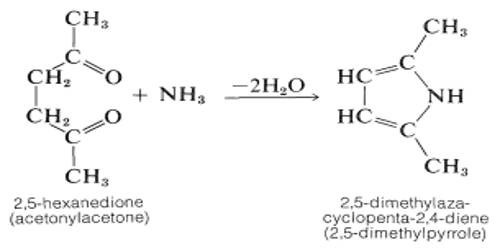Using electricity, hydrogen can be created by splitting water into hydrogen and oxygen. This procedure is carbon-neutral if the electricity is generated by renewable sources such as wind. It can then be used as a fuel source. Unlike fossil fuels such as gasoline, which generate climate-disrupting carbon dioxide, the only byproduct of hydrogen combustion is water.
Researchers demonstrate how magnetic flux sensors can be used to monitor the functioning of hydrogen-powered proton exchange membrane fuel cells. Failure states caused by inappropriate water levels can be recognized by measuring changes in current. This research could lead to more cost-effective, long-term energy generation for electric vehicles.
Scientists from the University of Tsukuba’s Graduate School of Systems and Information Engineering developed a new technique for identifying when a hydrogen fuel cell’s performance is lowered due to periods of excess or inadequate water. The quantity of current created may be measured noninvasively using sensors that measure magnetic flux density, which can indicate a problem. This research could lead to technology that improves the reliability of fuel cells while also dramatically lowering the carbon footprint of automobiles.
Water conditions make fuel cell performance unpredictable and unreliable, even under nominally similar operating settings. When the system is working properly, the electrical currents created produce a distinct pattern of magnetic fields that may be detected by sensors. This enables failure statuses to be instantly recognized as a result of changes in magnetic flux.
Yutaro Akimoto
Cars powered by hydrogen fuel cells are looking better by the day as the search for environmentally acceptable transportation alternatives to replace the internal combustion engine continues. In addition to emitting no CO2, these electrical energy generation devices are highly efficient and operate at lower temperatures than previous technologies. A proton exchange membrane fuel cell is one of the most common (PEMFC). A membrane permeable to hydrogen nuclei (single protons) separates the oxygen and hydrogen compartments in it.
When protons penetrate the membrane to unite with oxygen atoms, electrons flow via a wire to complete a water molecule, the only result other than electricity. A PEMFC, on the other hand, is prone to failure due to either drying up or excess water flooding the system. To ensure top performance, new detectors that can detect this fast are necessary, particularly in stacks of fuel cells where it might be difficult to determine where the problem is occurring.
Hydrogen may be the answer the country is seeking for. It is currently seen as a key alternative to fossil energy, having multiple applications in industry and mobility, as well as heating in the private sector. This effectively indicates that hydrogen can do everything that oil, coal, and natural gas have done in the past – without emitting CO2.

However, hydrogen cannot be considered inherently sustainable. Grey hydrogen is created by burning fossil fuels that emit a lot of CO2. According to the government, its production in the Netherlands currently amounts to 13 megatons per year. Only green hydrogen is created in a sustainable manner, using renewable energy sources such as wind or solar. A ‘green’ energy transition requires ‘green’ hydrogen.
A team of academics at the University of Tsukuba has now devised a novel system based on the magnetic flux generated by electrical currents inside the fuel cell. When the system is working properly, the electrical currents created produce a distinct pattern of magnetic fields that may be detected by sensors. This enables failure statuses to be instantly recognized as a result of changes in magnetic flux. “Water conditions make fuel cell performance unpredictable and unreliable, even under nominally similar operating settings,” explains author Yutaro Akimoto.
The team put their system through its paces with an air-cooled 50-Watt PEMFC stack made up of five fuel cells. Sensors inserted inside cooling holes were used to measure the magnetic flux density. If a fault was discovered, the necessary control might be implemented. “Our findings pave the way for automated control systems to be included into future fuel cells,” says Professor Akimoto. This has the potential to pave the path for more efficient and practical zero-emission automobiles.
Japan may be the least likely country to spark a revolution, but if implemented correctly, its new energy policy will transform Japan’s economy, society, and energy infrastructure. The new energy policy envisions a “hydrogen society,” in which citizens use hydrogen as their major source of energy. Hydrogen fuel would be generated from renewable sources and utilized to create electricity at home as well as power automobiles using fuel cells.
















